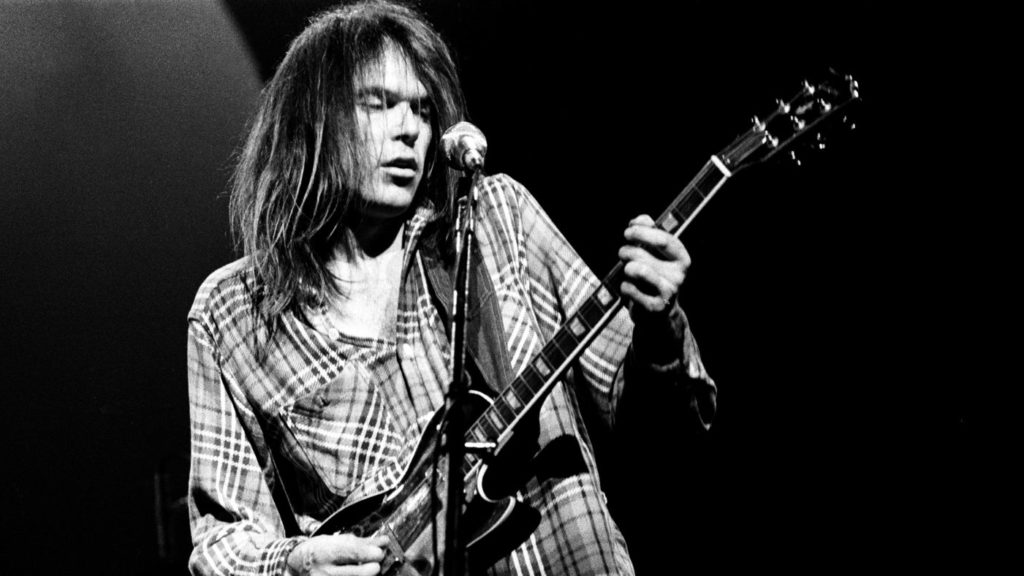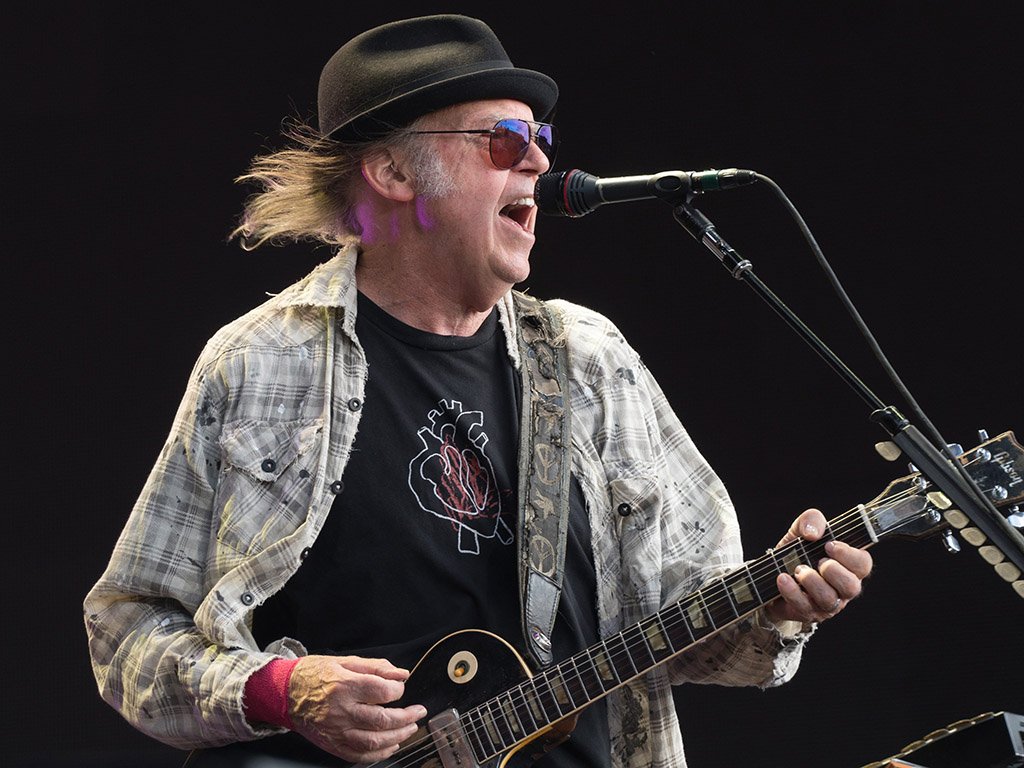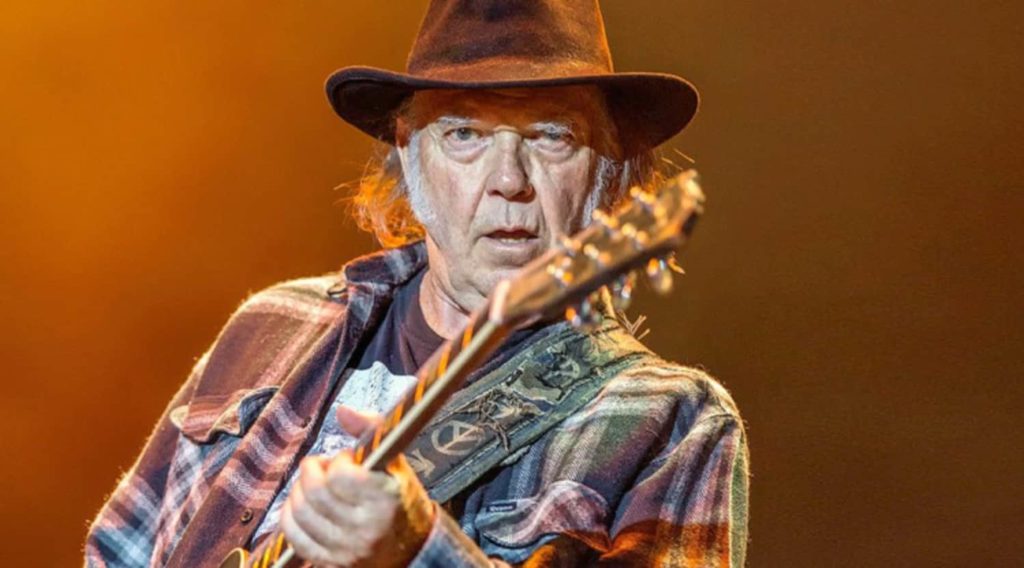Few rock musicians have been as famous and influential as Neil Young. Ever since he left the Buffalo Springfield band in 1968 to embark on a solo career, Young has only listened to his muse. And the muse told him different things. Rarely has Young used the same genre on two different albums.
The only thing that remained low was the quality of his music, masterful guitar playing and the emotional richness of the songs.
The artist had two dominant styles of music - gentle folk and country rock (which can be heard most clearly in Young's work in the 1970s). However, with the same success, Young could delve into the blues, and into electronics, and even into rockabilly.
Despite his huge range of sounds and influences, Young continued to develop, writing new songs and exploring new music. The musician has been challenging new styles of music for over 50 years. Forcing young musicians to follow in his footsteps.

The beginning of the creative path of Neil Young
Neil Young was born November 12, 1945 in Toronto, Canada. After his parents divorced, he moved to Winnipeg with his mother. The musician's father was a sports journalist.
Young started playing music while still in high school. Not only did he play garage rock in bands like the Squires, but he also managed to play local clubs and coffee shops. That's how he met Stephen Stills and Johnny Mitchell.
In 1966, the musician joined the Mynah Birds. It also featured bassist Bruce Palmer and Rick James. However, the group did not find success. That is why a frustrated Young drove his Pontiac to Los Angeles, taking Palmer as support.
Shortly after the guys arrived in Los Angeles, they met Stills and formed their own band, Buffalo Springfield. The band quickly became one of the leaders of the California folk rock scene.
Despite the success of Buffalo Springfield, the band suffered from tensions among its members. Young tried several times to leave the group before finally leaving the band.
First thoughts on Neil Young's solo career
At that time, Neil Young was seriously thinking about a solo career and hired Elliot Roberts as his manager. They were soon signed to Reprise Records, where Young released his debut album in early 1969.
By the time the album was released, Young had already begun playing with local band the Rockets. It featured guitarist Danny Witten, bassist Billy Talbot and drummer Ralph Molina.
Young suggested that the band be renamed Crazy Horse. He asked the musicians to support him in the recording of the second album Everybody Knows This Is Nowhere. Recorded in just two weeks, the disc quickly gained "gold" status.
After recording was completed, Young joined Stills and the band on their spring album Déjà Vu (1970). However, despite this collaboration, Young continued to be a solo artist.
He released a solo album, After the Gold Rush, in August 1970. The album, along with its accompanying single Only Love Can Break Your Heart, made Neil Young a solo star and his popularity only increased.
Crosby, Stills, Nash & Young
Although the Crosby, Stills, Nash & Young collective was very successful, the musicians could not work steadily and stopped working together in the spring of 1971.
The following year, Young released his first album, which topped the country charts. The Harvest album also featured the first and only single Heart of Gold. Instead of accepting his success, the musician decided to ignore it and unexpectedly released the film Journey into the Past. Both the film and its soundtrack received lurid reviews, as did the 1973 live album Time Fades Away with The Stray Gators.
Both "Journey into the Past" and "Time Fades Away" signaled that Young had entered a dark period in his life, but these works were just the tip of the iceberg.
After the death of Danny Witten, a former colleague, Neil Young recorded a dark album called Tonight's the Night in 1972. However, at that time the musician changed his mind about releasing the record. Instead, he released On the Beach. Still, fans heard Tonight's the Night in 1975.
By this point, Young had already overcome his depression and returned to a normal life.

Neil Young's return to action
1979 saw the release of the album Live Rust and the live recording of Rust Never Sleeps. The album restored Young to his former glory. However, despite such success, the musician decided to take a chance. Already in 1981, the heavy rock album Re*Ac*tor was released, which received negative reviews. After its release, Young left the Reprise label and began to collaborate with the start-up company Geffen Records. Here he was promised a lot of money and freedom of creativity.
Taking advantage of his position, Neil Young recorded the electronic album Trans in December 1982. His voice was recorded using a computer vocoder, which was not appreciated by critics. The work received negative reviews and bewilderment from the "fans".
During the decade, Young released three albums that were stylistic experiments. In 1985, he released the Old Ways series, followed by a new work, Landing on Water, the following year.
Also, the musician returned to his old record company Reprise. His first album after returning was This Note for You.
At the end of the year, he recorded a reunion album with the Crosby, Stills & Nash band called American Dream, which was met with negative reviews.
Neil Young's New Success
The American Dream album turned out to be a "failure", and no one even hoped for further success. However, in 1989 the album Freedom was released. He found commercial success in almost all corners of the world.
Around the same time the album was released, Young became a popular performer in indie rock circles. In 1989, he was featured on a tribute album called The Bridge. The following year, Young reunited with Crazy Horse for Ragged Glory. This album became the pinnacle of the musicians' creativity, having received commendable reviews over the past 20 years.

To tour in support of the album, Young hired the band Sonic Youth. That's how she became famous in rock circles.
It was after the start of the tour that Neil Young began to be positioned as the progenitor of alternative and grunge rock. But soon the musician abandoned the idea to perform hard rock. Young released Harvest Moon in 1992. It became a direct continuation of his "breakthrough" hit in 1972.
The following year, the musician released the album Sleeps with Angels, which was hailed as a masterpiece in narrow circles. After its release, Young began playing with Pearl Jam. Recording an album with this group in Seattle in early 1995. The resulting recording of Mirror Ball was met with positive reviews. But in terms of sales, everything turned out to be much more deplorable.
Early 2000s
A new solo album, Silver & Gold, followed in the spring of 2000. In December, a DVD was released called Red Rocks Live, which included 12 tracks.
Young's next work was perhaps his most ambitious and conceptual album about life in a small town called Greendale.
In early 2005, Young was diagnosed with a potentially fatal brain aneurysm. However, the treatment did not affect the creative path of the musician, as he continued to record music.
In the same year, the controversial collection of protest songs Living with War was released.
Young only continued his surge of activity in 2017 with the release of Children of Destiny. Also in 2018, Young released two discs consisting of archival recordings.
In May 2018, Young revealed that he would be playing some shows in California with Crazy Horse. The concerts turned out to be just a “warm-up” for the recording of the Colorado album in 2019.



